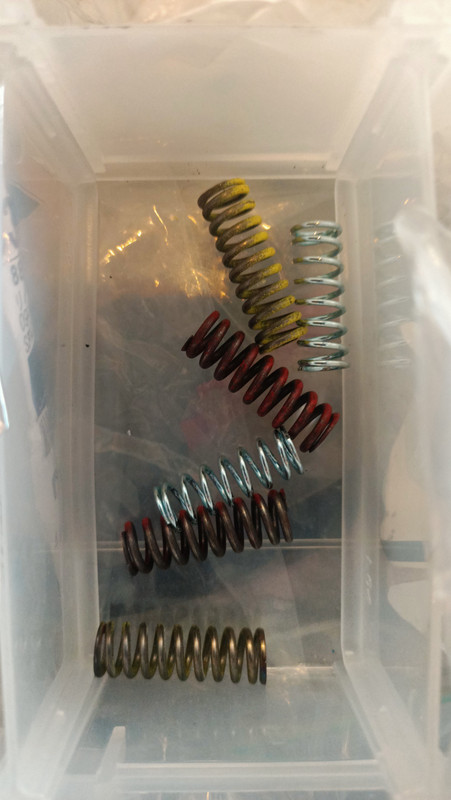- I have Sonic .95 springs, I weigh about 220.
- The oil level and preload is set per the Sonic instructions - from memory it's 150mm oil level from top, and the preload is per spec.
- 15W oil
- Anti-dive bypassed with plates (with passages), air holes at the top filled with J-B weld.
- The holes in the damper rod (?) are drilled out a bit larger by PO.
They ride great in normal use but if I hit a sharp bump they feel like they have hydraulic lock and don't react well at all. When braking or riding normally they are compliant.
What I've done to try to improve things:
I reduced the oil level - I had it too high. Seems to me that too high oil level would introduce air springing which isn't really high impact resistance, but it was too stiff overall when initially set up, so it helped.
I also backed off the emulator adjuster nearly to the end, which also had a good effect. This is directly 'bypass' compliance adjustment, from what I can tell.
I had 20W and changed to 15W (mixed in some 10W to cut to half/half).
All I can think to do is reduce fork oil viscosity and use less until it's right. Edging the emulator back a turn may be possible but doesn't seem right. Not sure about the damper rod hole sizing, maybe enlarge more? It's close but no cigar, so any help would be appreciated. I am no fork setup expert, obviously - though I have rebuilt to stock many times, I've never dealt with mods.
.png)




Comment